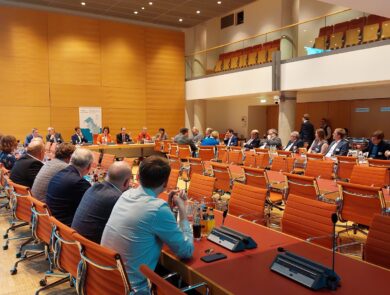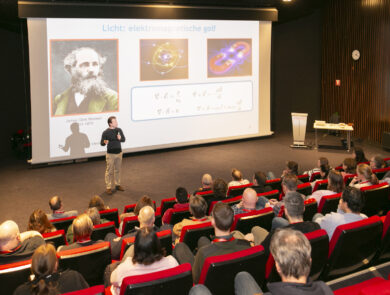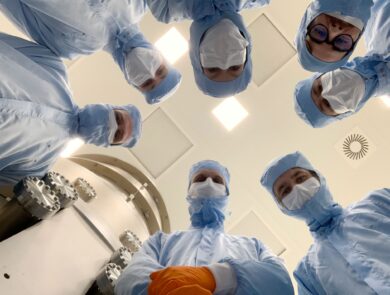Dutch fund for large-scale research infrastructure supports LISA and Einstein Telescope

A Dutch research consortium led by SRON is getting a grant from Dutch research funder NWO to develop tech for ESA and NASA’s LISA space mission. LISA is the first space detector for gravitational waves. The Earth-based variant Einstein Telescope also benefits from the research.
“State-of-the-art scientific research facilities have an enormous attraction for (young) talent and are a boost for the strong position in Europe and in the rest of the world,” said Dutch Minister Robbert Dijkgraaf (Education, Culture and Science). Minister Dijkgraaf kicked off 9 major scientific projects on April 24, including a grant for the space project LISA.
About LISA
The Laser Interferometer Space Antenna (LISA) consists of three spacecraft that will fly around the Sun behind the Earth starting in 2035. By continuously measuring their mutual distances with laser beams, they detect gravitational waves. In space, LISA can extend its arms up to 2.5 million kilometers, detecting longer wavelengths than ground-based detectors.
As consortium leader, SRON will work with Nikhef, Radboud, Leiden University, UvA, Utrecht University, TNO, Maastricht University and RUG to build the photodiodes (LISA’s “eyes”), software, the targeting mechanism and associated readout electronics.
Development valuable for Einstein Telescope
While developing the necessary technology for LISA’s three laser-connected satellites, the institutes involved are also gaining knowledge and skills that are useful for the development of the current test-and-development laboratory ET Pathfinder and the future Einstein Telescope. This includes, for example, mechatronics, semiconductor technology and low-noise electronics.
NWO awarded the 12 million Euro grant as part of the National Roadmap Large-Scale Scientific Infrastructure. Nine proposals were approved in this round.
Image: artistic impression of ESA and NASA’s LISA space mission.
Credit: University of Florida / Simon Barke (CC BY 4.0)


